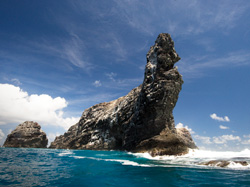Review of Precious Corals in International Trade
Johannesburg, South Africa. September 25, 2016 - The United States submitted a proposal to gather additional information about the current use of rare and precious corals (black, red and pink) In their opening statement, the United States expressed concern that China's use of these corals has increased 2000% since 2012. The intention is to gather more information about corals, evaluate their consumption rate and project sustainability based upon current use. The United States offered to underwrite this study.
As a point of departure the United States wants to use information gathered via CITES mandated paperwork for internationally traded black coral as a way to evaluate the effectiveness of the CITES decisions. The European Union, Maldives, Senegal and Fiji came out in strong support of this document.
The Chinese delegation stated that while they think conservation of rare and precious corals is meaningful, they are strongly against this proposal. A new point of concern entered by the Chinese delegate was "If aquatic species are listed on any of the CITES Appendices, the action will increase their value, demand will intensify and therefore poaching will ensue."
China questioned the accuracy of several facts the United States presented within the body of their document. The Chinese representative then expressed deep concern for the additional pressure the proposed questionnaire would place upon nations whose fishery departments are already taxed. They also stated that since some of the questions inquire about internal use of coral, they will view this proposal as a volunteer exercise and not something that CITES can mandate. China stated that individual countries are best positioned to protect these resources and CITES is only a "supplementary" tool.
The Japanese delegation concurred stating that the questionnaire the United States wishes to present to CITES member states is "very ambitious and requires too much." They do not wish to extend information about corals used in jewelry, or information about the current stockpile of corals within Japan. Japan believes that sustainable takes can be managed for precious corals.
The debate was heated and China and Japan insisted on ironing out the language of the proposal before the plenary chairwoman could make a ruling. The United States, Japan and China were given until tomorrow to agree upon the language of the proposal.






























